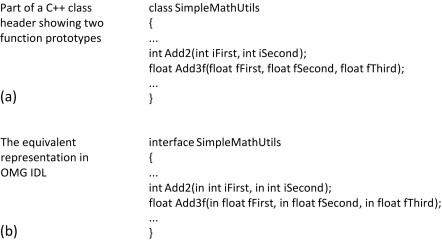Understanding golf handicaps is essential for players aiming to improve their performance on the course. This analysis delves into the essential components of golf handicaps, elucidating their role in measuring a golfer’s skill relative to the difficulty of a given course.By exploring the intricate relationship between a player’s handicap and various course evaluations, golfers can make informed decisions about course selection and gameplay strategies. Furthermore, this examination highlights how a deeper awareness of one’s handicap can reveal strengths and weaknesses, ultimately fostering not only skill enhancement but also greater satisfaction in the game. Through this analytical lens, players are equipped to optimize their performance, making the most of their golfing experience.
Understanding the Fundamentals of Golf Handicaps
The concept of golf handicaps serves as a crucial mechanism for leveling the playing field among golfers of varying skill levels. A golf handicap is essentially a numerical portrayal of a golfer’s playing ability, allowing individuals to compete on an equitable basis.This index is calculated based on a player’s recent performances, specifically their scores in relation to the course rating and slope.Understanding how these calculations work can greatly enhance a player’s strategic approach to the game.
Factors that contribute to the determination of a golf handicap include:
- Average Score: Your scores from a set number of recent rounds impact your handicap.A lower average score may indicate a more skilled player.
- Course Rating: This metric reflects the difficulty of a course for a scratch golfer, integrating elements like length, obstacles, and weather conditions.
- Slope Rating: this measures the difficulty level of a course for players who are not scratch golfers, providing context for how a player’s handicap applies across different courses.
Accurate understanding of these elements not only enables golfers to anticipate their performance on different courses but also informs better decision-making during play. By evaluating personal statistics and adjusting their handicaps accordingly, golfers can approach each game with a tailored strategy. For instance,when selecting a course,an individual armed with this knowledge may choose one that complements their style of play,enhancing overall performance and satisfaction on the course.
Evaluating Course difficulty: The Role of Slope and Rating
the assessment of golf course difficulty is fundamentally rooted in two primary metrics: **Course Rating** and **Slope Rating**. These ratings provide valuable insights into the variations in play between golfers of differing skill levels. The **Course Rating** reflects the expected score for a scratch golfer, or a player with a handicap of zero, under normal conditions. This number is crucial as it sets a benchmark for performance, enabling golfers to understand how a course stacks up against their capabilities. For instance, a course with a higher Course Rating indicates greater difficulty, primarily due to factors such as course layout, distance, and the challenges posed by hazards.
In contrast, **Slope Rating** captures the relative difficulty of a course for a bogey golfer—typically a player with a higher handicap. This rating quantifies how a high-handicap golfer’s performance may differ from a scratch golfer’s when faced with the same course. The Slope Rating scale ranges from 55 to 155, with higher values indicating a more notable disparity in expected performance between these two categories of players. In this very way, the Slope Rating helps to adjust the scoring systems in golf, making it possible to equate the play of individuals of varying skills.
| Rating Type | Description | Typical Range |
|---|---|---|
| Course Rating | Expected score for a scratch golfer | Lower values imply easier courses, typically starting from around 67 |
| Slope Rating | Relative difficulty for high-handicap golfers compared to scratch golfers | Ranges from 55 (easiest) to 155 (most arduous) |
Understanding these ratings is vital for golfers seeking to enhance their performance through effective handicap management. By analyzing both the Course Rating and Slope Rating, players can gain critical insights into their scoring potential on different courses, thereby crafting strategic approaches tailored to their individual strengths and weaknesses. This knowledge fosters not only a better understanding of personal performance but also promotes a greater recognition of the game and its varying challenges.
Assessing personal Performance: Tools for Accurate Handicap Calculation
Accurate handicap calculation is integral to understanding one’s golf performance, as it directly reflects a golfer’s potential on the course. To ensure that the calculation is reflective of actual abilities, a golfer should utilize several tools and methodologies. Key considerations in this process include:
- Scorecards: Maintaining detailed scorecards for each round played allows golfers to track performance trends over time. This data is essential for computing the average scores needed to determine a handicap.
- Course Rating and Slope: Familiarizing oneself with the rating and slope of courses played enhances the accuracy of the handicap calculation. These metrics provide insights into course difficulty and enable golfers to gauge their capabilities against varying challenges.
- Variance Analysis: Regularly assessing performance against the established handicap plateau allows golfers to identify patterns. Variances between expected and actual scores indicate areas for betterment and influence future gameplay strategies.
To facilitate the mindfulness of performance metrics,golfers can use technology tools such as mobile applications and online platforms for real-time tracking of scores. Many of these applications provide valuable statistical analyses, including:
| Statistical Metric | Importance |
|---|---|
| Greens in Regulation (GIR) | Indicates approach accuracy and prospect for birdies. |
| Putts per Round | Reflects proficiency on the green; lower values suggest better performance. |
| Driving Accuracy | A measure of how often tee shots land in the fairway, affecting overall scoring potential. |
Ultimately, a thorough approach to monitoring personal performance, combined with a systematic evaluation of handicaps, empowers golfers to ascertain their level of proficiency accurately.By leveraging analytical tools and maintaining a consistent record of their golfing journey, players can embark on a path of continuous improvement. Engaging with these quantitative insights not only fosters skill progress but also enhances the overall enjoyment of the game by aligning expectations with performance realities.
Strategic Course Selection: Aligning Handicaps with Individual Play Style
Understanding the correlation between a golfer’s handicap and their unique play style is crucial for strategic course selection. When evaluating potential courses, it is essential to align the difficulty represented by the handicap with one’s strengths and weaknesses. A higher handicap might suggest a golfer should prioritize more forgiving layouts that allow for mistakes while still providing opportunities for skillful shots to shine. Conversely, low-handicap golfers may thrive in challenging environments where precision and strategic shot-making are essential.
Consider the following factors when aligning handicap levels with course characteristics:
- Course Length: A longer course may favor stronger, more consistent players, while shorter layouts can be beneficial for those who excel in strategic placement and creativity.
- Hazards: Golfers should assess how water, bunkers, and rough affect their game.A handicap can guide which hazards to approach with caution.
- Green Complexity: Advanced players frequently enough handle intricacies of multi-tiered greens effectively.A high handicap player may wish to avoid overly complex putting situations.
To further illustrate this alignment between handicap and course selection, consider the following table that promotes strategic decision-making:
| Handicap Range | Recommended Course Type | Key Characteristics |
|---|---|---|
| 0-5 | Challenging | Varied terrain, narrow fairways, and complex greens |
| 6-15 | Moderate | Balanced layout with some risk-reward options |
| 16+ | Forgiving | Wide fairways, fewer hazards, and accessible greens |
taking an introspective approach to course selection based on one’s handicap not only nurtures growth but substantially enhances the overall golfing experience. By responding to specific play styles while strategizing course characteristics, golfers can not only maximize their performance but also enjoy the game more profoundly. this meticulous approach ultimately lays the groundwork for a fulfilling journey toward skill development.
Maximizing Training efforts: Using Handicap Insights for Skill Development
Understanding one’s handicap can offer valuable insights into specific areas of improvement, guiding golfers in their training efforts. By analyzing the components that contribute to an individual’s handicap,players can pinpoint which aspects of their game require more focus. This could include various elements such as driving distance, accuracy on the fairway, approaches to the green, or putting proficiency. By prioritizing these areas, athletes can structure their practice sessions to maximize progress and foster well-rounded skill development.
To leverage handicap insights effectively, golfers should engage in intentional practice routines. consider implementing the following focused training strategies:
- Targeted Drills: Design practice sessions around specific weaknesses identified through handicap analysis.
- Statistical Monitoring: Keep track of progress in key performance metrics such as fairway hits, greens in regulation, and putts per round.
- Feedback Mechanisms: Use video analysis or professional coaching to receive immediate feedback on swing mechanics.
Additionally, incorporating competitive play into training can help golfers apply their skills under pressure, just as they would during a round. Players should consider setting up informal matches with peers of varying skill levels, allowing them to adapt their strategies based on differing handicaps. This will not only enhance decision-making abilities on the course but also provide scenarios to test refinement in certain skills. Building a structured training program with these efforts in mind can significantly aid in transforming weaknesses into strengths, ultimately leading to improved performance and a more enjoyable golfing experience.
the analysis of golf handicaps serves as a vital tool for players aspiring to elevate their performance on the course. By dissecting the multifaceted nature of handicaps—including their calculation, submission, and implications for course selection—golfers can develop a nuanced understanding of their capabilities and limitations. This self-awareness not only aids in strategic gameplay but also fosters a deeper appreciation for the sport. As golfers utilize their handicaps to inform decisions, refine skills, and enhance their overall enjoyment, they position themselves for both competitive success and personal satisfaction. Future explorations into the realm of golf handicapping promise to offer even greater insights, ultimately contributing to the ongoing dialog about skill development and performance optimization in the sport.





